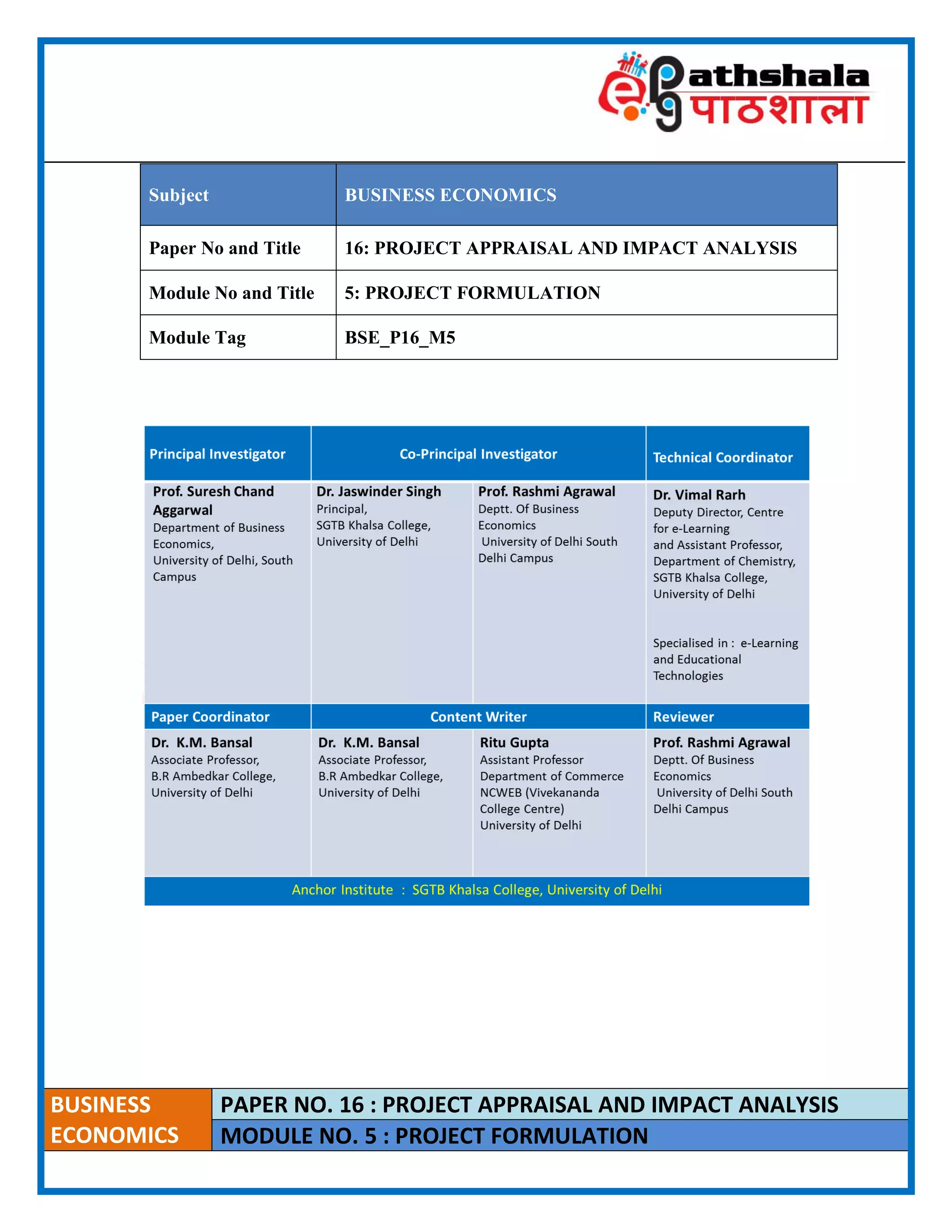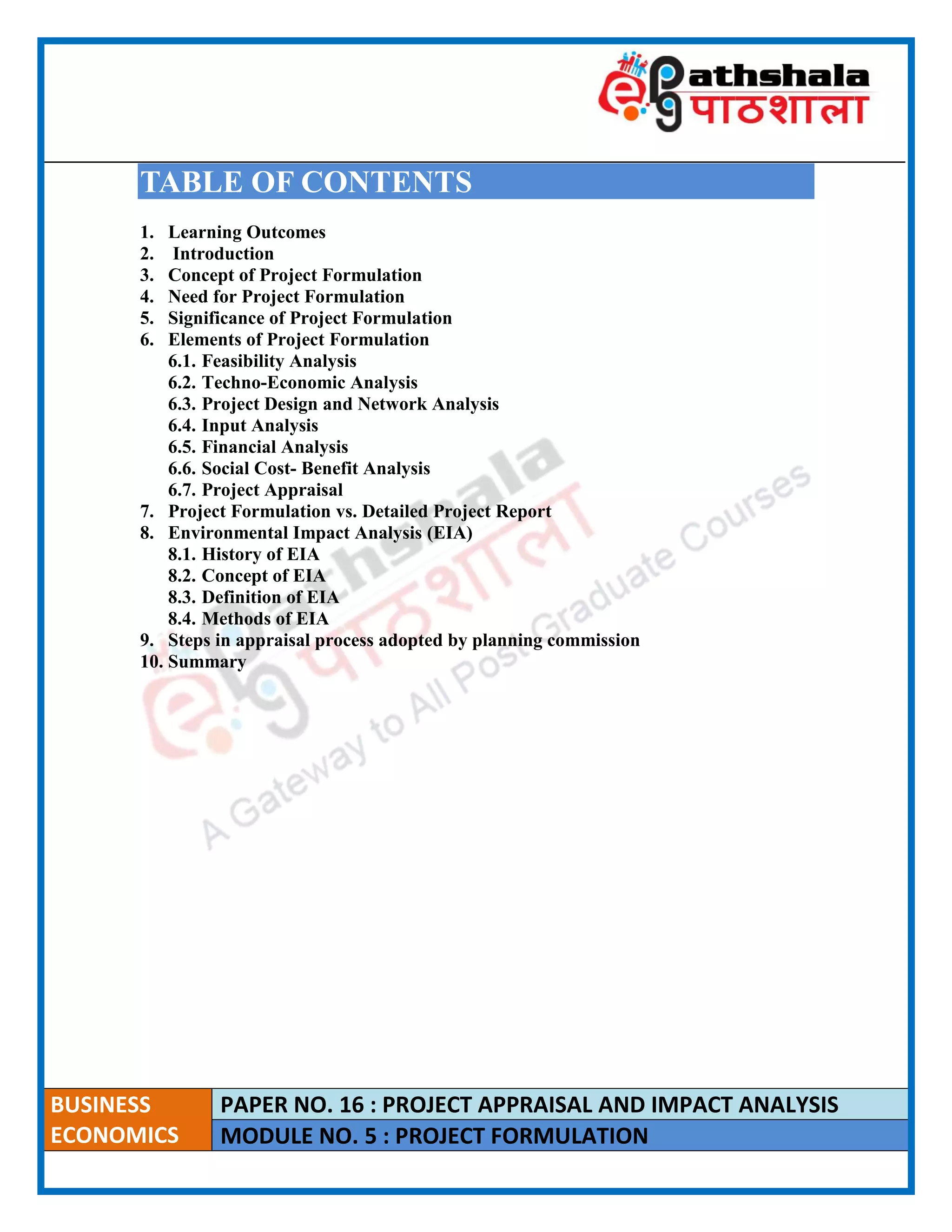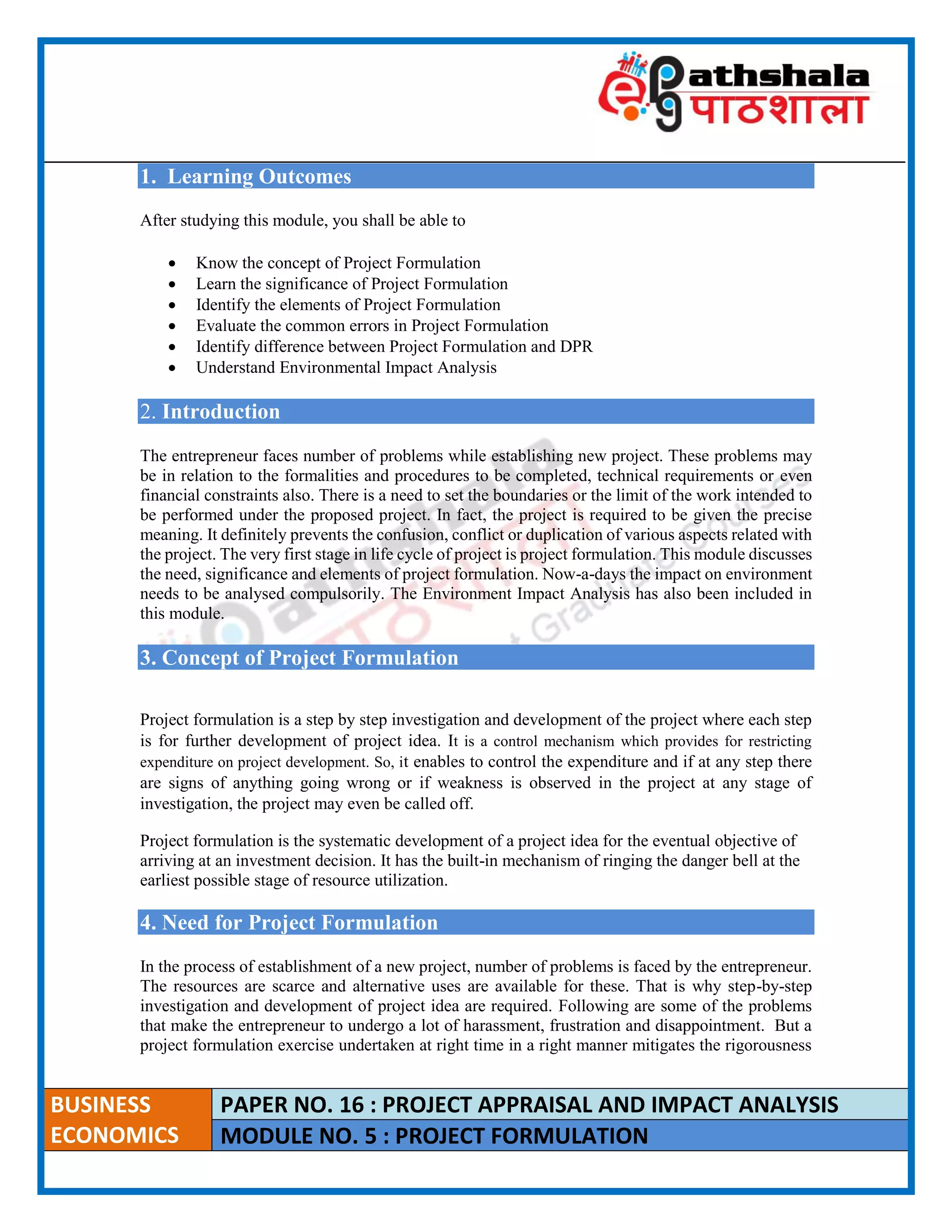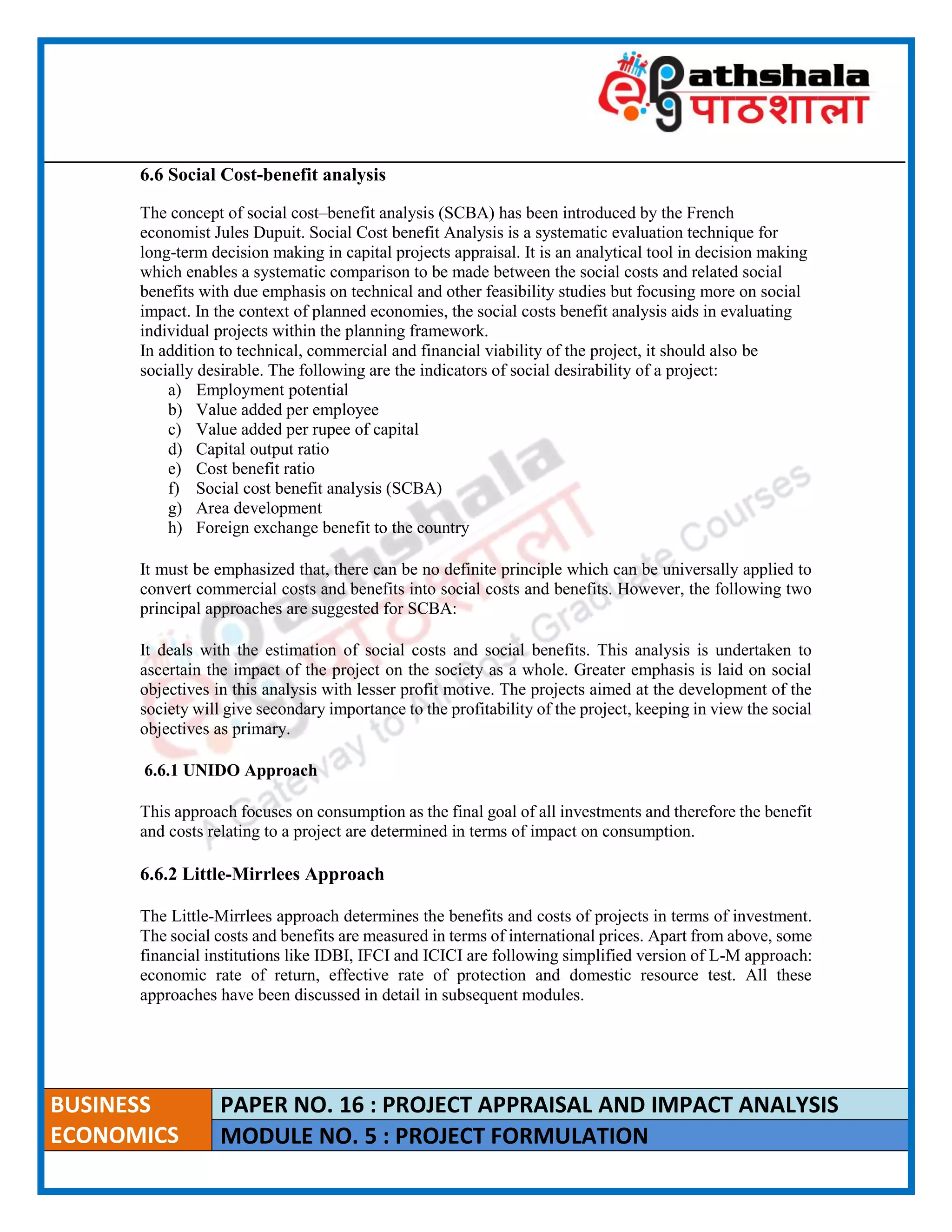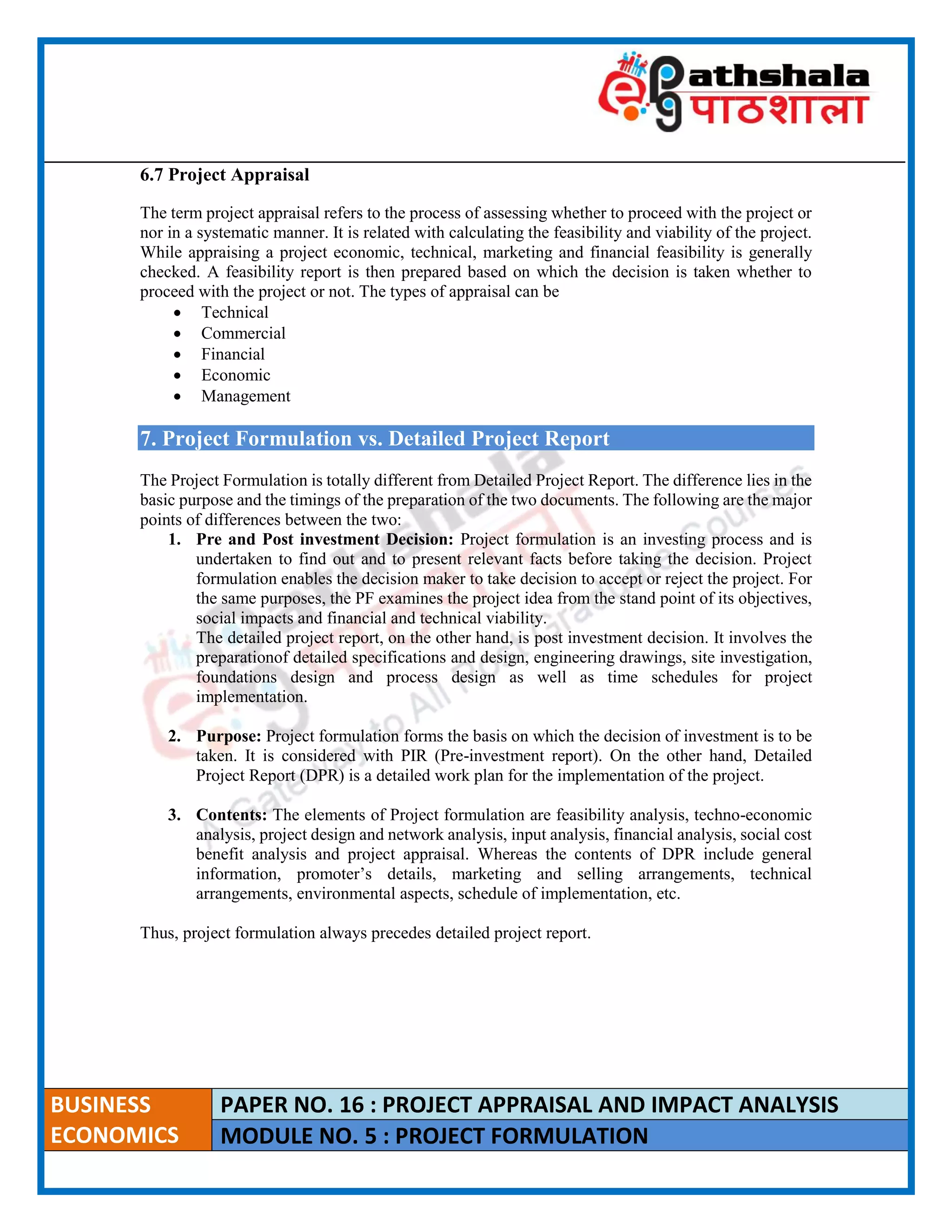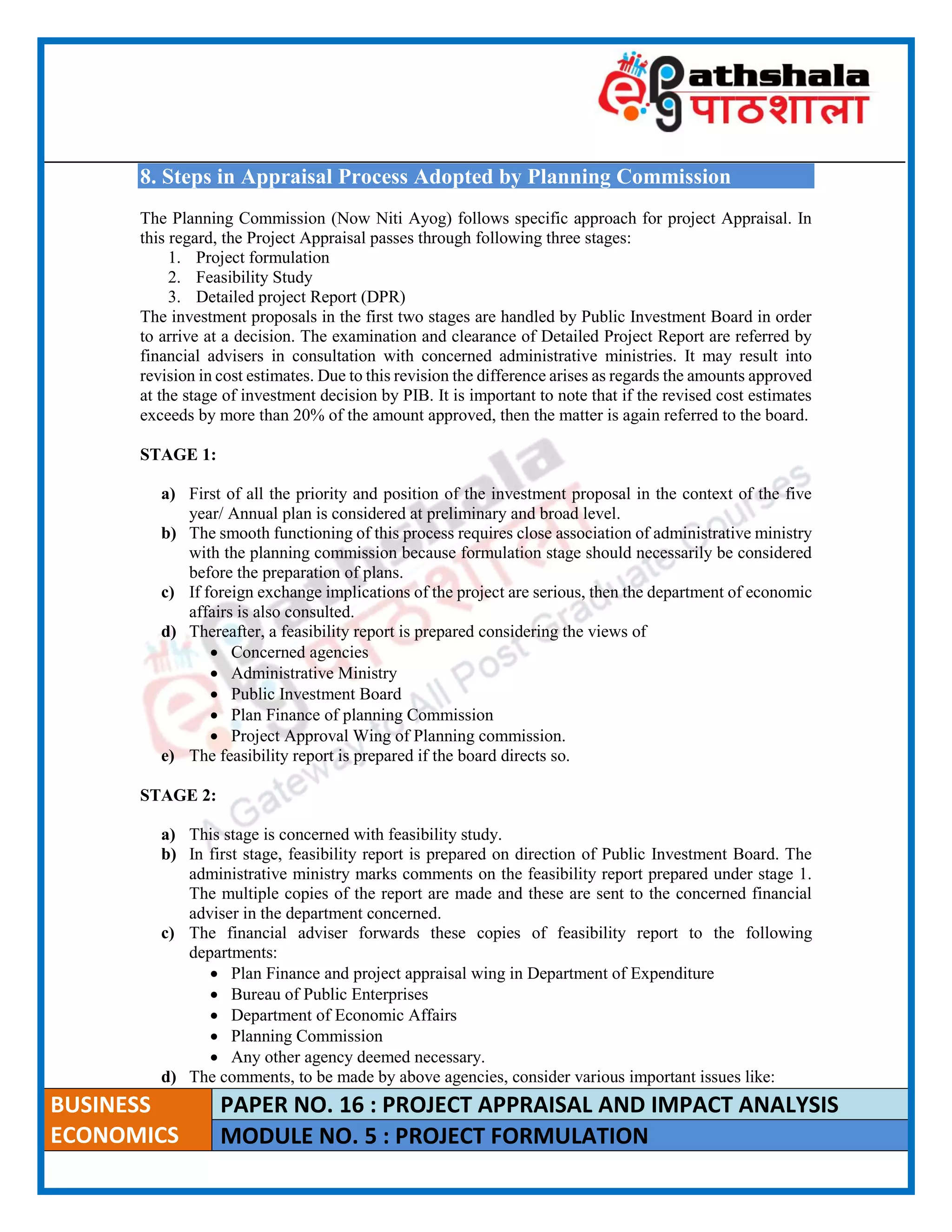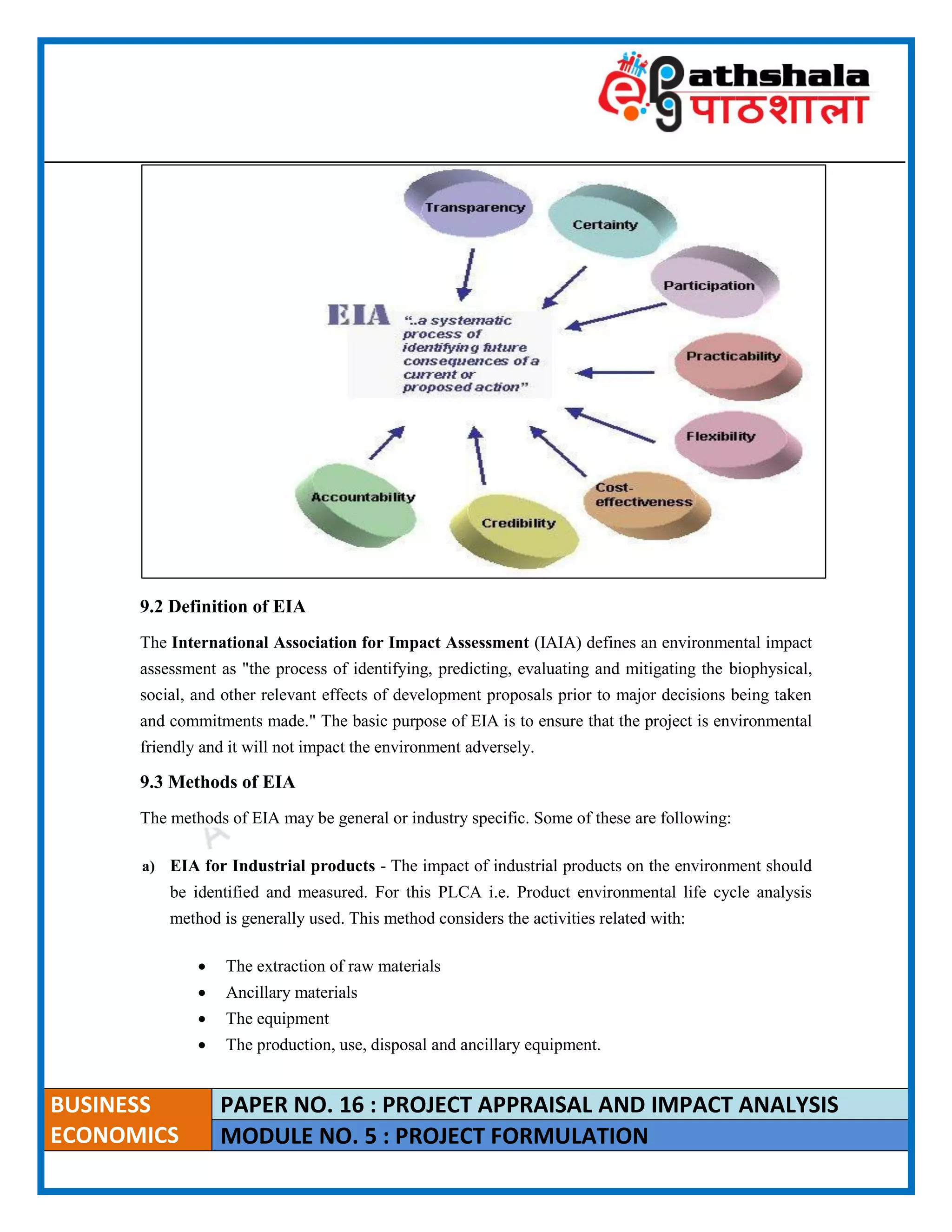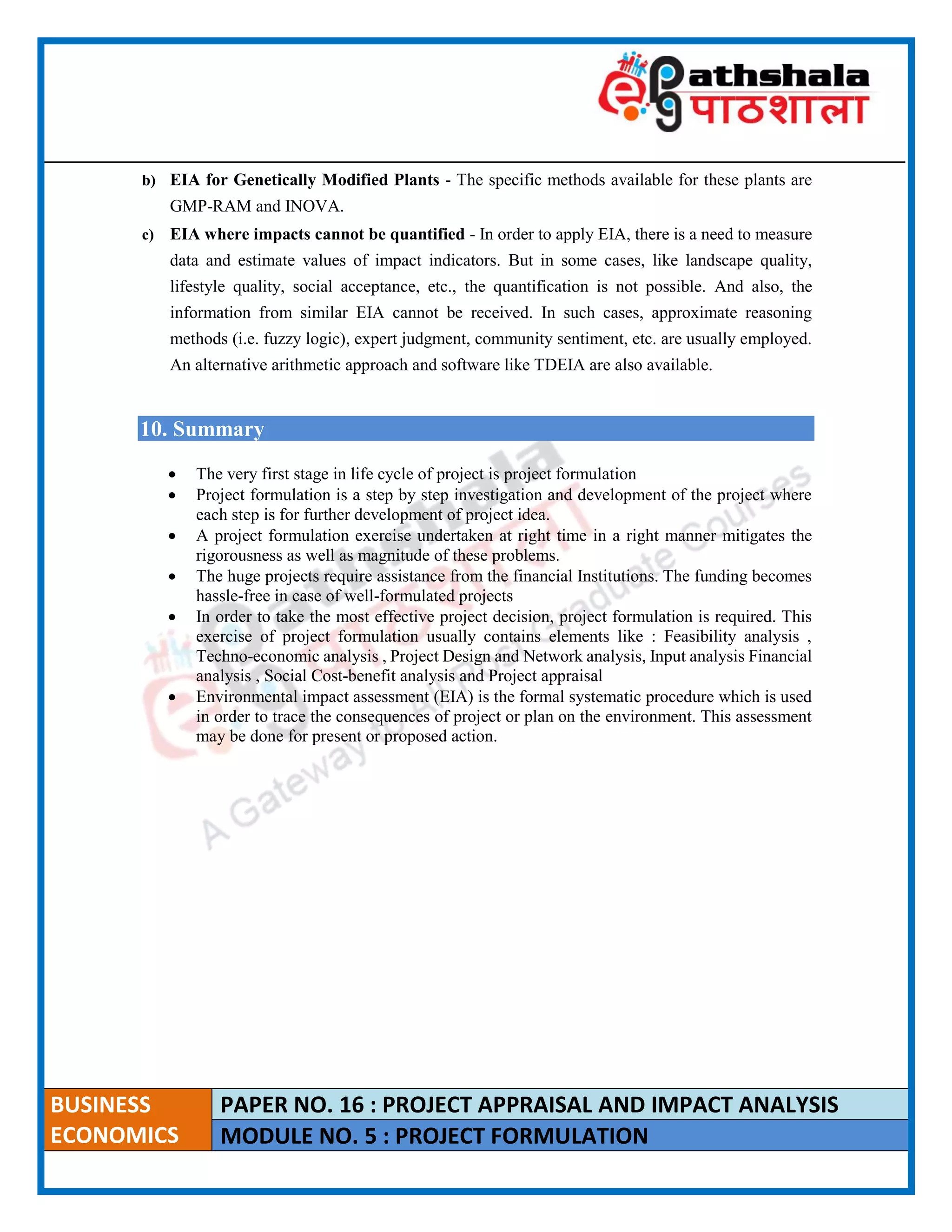This document provides an overview of project formulation, including its key elements and significance. It discusses the need for project formulation, highlighting issues like technology selection, resource constraints, and legal/policy impacts. The main elements of project formulation are identified as feasibility analysis, techno-economic analysis, project design/network analysis, input analysis, financial analysis, social cost-benefit analysis, and project appraisal. The document also distinguishes project formulation from a detailed project report, and outlines the steps in India's planning commission's project appraisal process.
